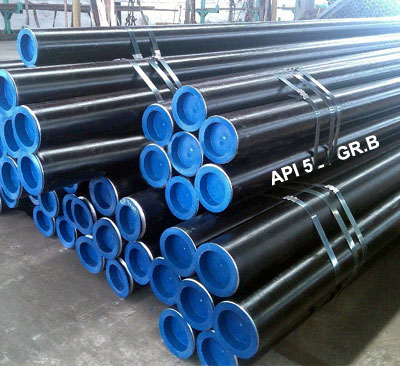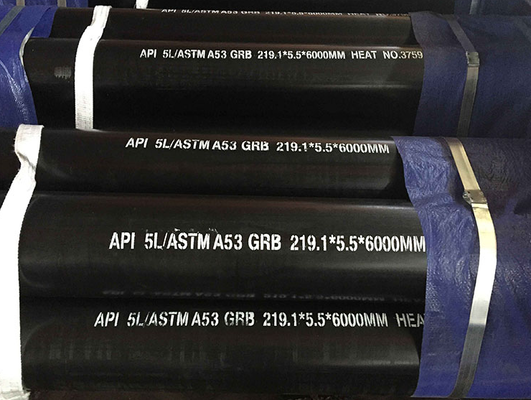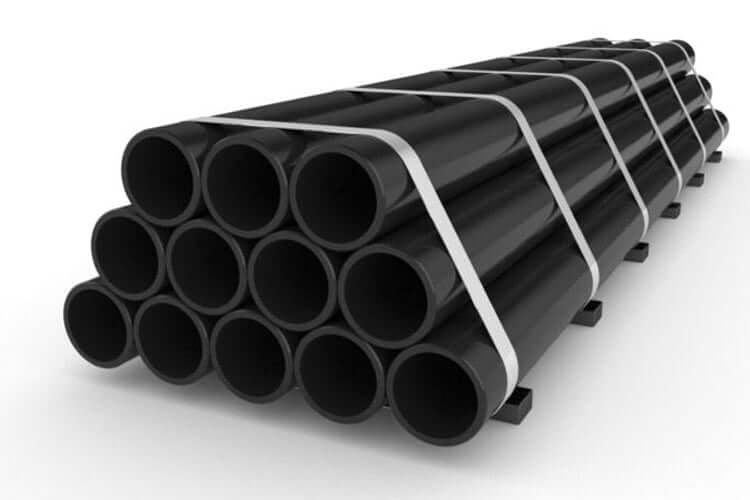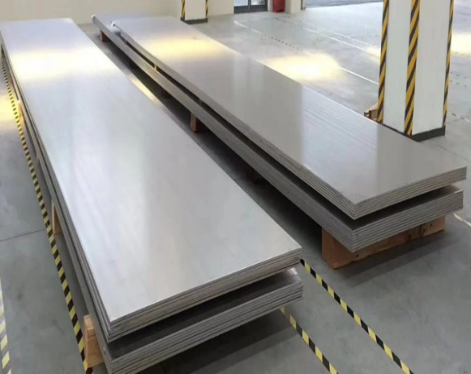1. API 5L Steel Pipe Standard Specification
API 5L generally refers to the execution standard for pipeline steel pipes. Pipeline steel pipes include seamless steel pipes and welded pipes. At present, the commonly used welded steel pipe types on oil pipelines include spiral submerged arc welded pipe (SSAW), straight seam submerged arc welded pipe (LSAW), and electrical resistance welded pipe (ERW). Seamless steel pipes are generally selected when the pipe diameter is less than 152mm.
(1)API 5L steel grade
The raw material steel grades of API 5L steel pipes include GR.B, X42, X46, X52, X56, X60, X70, X80, etc. Different steel grades of steel pipes have different requirements for raw materials and production, but the carbon equivalent between different steel grades is strictly controlled.
(2)API 5L quality standards PSL1 and PSL2
In the API 5L steel pipe standard, the quality standards (or requirements) of steel pipes are divided into PSL1 and PSL2. PSL is the abbreviation of product specification level. When API 5L was formulated, it was considered that there are two basic levels of standard technical requirements for pipeline pipes, so two product specification levels of technical requirements were established: PSL1 and PSL2. PSL1 provides general line pipe quality level requirements. PSL2 includes increased chemical composition, notch toughness, strength properties and mandatory requirements for supplemental NDE.The steel pipe grade of PSL1 steel pipe (name indicating the strength level of the steel pipe, such as L290, 290 refers to the minimum yield strength of the pipe body is 290MPa) and the steel grade (or grade, such as X42, where 42 represents the minimum yield strength or the upward circle The minimum yield strength of the steel pipe (in psi) is the same as that of the steel pipe. It is composed of letters or a mixed number of letters and numbers that identify the strength level of the steel pipe, and the steel grade is related to the chemical composition of the steel.
PSL2 steel pipes are composed of letters or a combination of letters and numbers used to identify the strength level of the steel pipe, and the steel name (steel grade) is related to the chemical composition of the steel. It also includes a single letter (R, N, Q or M ) forms a suffix, which indicates the delivery status. For PSL2, after the delivery status, there is also the letter S (acid service environment) or O (marine service environment) indicating the service status.
(3)Quality standard PSL1 vs PSL2
The quality standard of PSL2 is higher than that of PSL1. These two specification levels not only have different inspection requirements, but also different requirements for chemical composition and mechanical properties. Therefore, when ordering according to API 5L, the terms in the contract must not only indicate the usual specifications, steel grade, etc. In addition to the indicators, the product specification level must also be indicated, that is, PSL1 or PSL2. PSL2 is stricter than PSL1 in terms of chemical composition, tensile properties, impact energy, non-destructive testing and other indicators.PSL1 does not require impact performance. For all steel grades of PSL2 except X80 steel grade, full size 0℃ Akv average: longitudinal ≥101J, transverse ≥68J.
Line pipes should be tested for hydraulic pressure one by one, and the standard does not stipulate that non-destructive substitution of hydraulic pressure is allowed. PSL1 does not require non-destructive inspection, while PSL2 requires non-destructive inspection one by one.

2.ASTM A53 Standard
The ASTMA53 standard is a standard specification for welded and seamless carbon steel pipes developed by the American Society for Testing and Materials (ASTM). The standard covers a variety of pipe sizes and thicknesses and applies to piping systems used to transport gases, liquids and other fluids. ASTM A53 standard pipes are commonly used in industrial and mechanical fields, as well as in water supply, heating and air conditioning systems in the construction industry.According to the ASTM A53 standard, pipes can be divided into two types: Type F and Type Den. Type F is seamless pipe and type E is electric welded pipe. Both types of pipes require heat treatment to ensure that their mechanical properties and chemical composition meet standard requirements. In addition, the surface requirements of the pipe should comply with the provisions of the ASTMA530/A530M standard to ensure its appearance quality.

3. ASTM A106 Seamless Steel Pipe Standard
ASTM A106 seamless steel pipe belongs to the American standard steel pipe. A106 includes A106-A and A106-B. It belongs to the ordinary carbon steel series and is one of the commonly used materials. ASTM A106 seamless steel pipe includes two processes: cold drawing and hot rolling. In addition to the different production processes, the two are different in precision, surface quality, minimum size, mechanical properties, and organizational structure. It is widely used in various industries such as petroleum, chemical industry, boilers, power stations, ships, machinery manufacturing, automobiles, aviation, aerospace, energy, geology, construction and military industry.
4.API 5L vs ASTM A106 vs ASTM A53 Steel Pipe
| Feature/Requirement | API 5L | ASTM A106 | ASTM A53 |
|---|---|---|---|
| Manufacturing Process | Includes seamless and ERW or LSAW welded steel pipes | Primarily hot-rolled or cold-drawn seamless steel pipes | Includes welded (ERW or SAW) and seamless steel pipes |
| Chemical Composition | Carbon and alloy steel, C: 0.24-0.28%, Mn: 0.9-1.2%, Si: ≤0.45% | C: ≤0.25%, Mn: ≤0.27%, Si: min 0.10% | C: ≤0.30%, Mn: ≤0.45%, P: ≤0.035%, S: ≤0.04% |
| Mechanical Properties | Varies by grade, good impact toughness and fatigue resistance | Higher tensile and yield strength, good elongation and cold bending properties | Lower tensile and yield strength, suitable for general purposes |
| Applications | Mainly used for long-distance transportation pipelines in oil and natural gas industry, suitable for various environments | High-temperature service seamless steel pipes, suitable for boilers, heat exchangers, etc. | General-purpose seamless steel pipes, suitable for pressure piping systems up to 350°C |
| Cost | Generally lower cost due to inclusion of welded steel pipes | Higher cost due to fully seamless manufacturing and complex process | Varies by product type (welded or seamless), generally lower than A106 |
| Heat Treatment | May include normalization and tempering as per product specifications | Normally normalized or tempered to enhance mechanical properties | Typically not heat treated, but may have annealing in some cases |
| Welding Capability | Welding performance depends on manufacturing process and material composition; ERW pipes may require preheating | Seamless pipes have good welding performance | Welding performance depends on manufacturing process; welded pipes may require specific welding techniques |
| Special Requirements | Two product specification levels (PSL1 and PSL2) with different testing and requirements | Additional impact tests may be required for high-temperature services | General purpose use, no special requirements for high temperature or impact properties |









